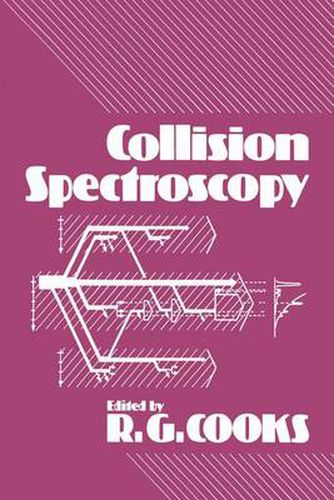Readings Newsletter
Become a Readings Member to make your shopping experience even easier.
Sign in or sign up for free!
You’re not far away from qualifying for FREE standard shipping within Australia
You’ve qualified for FREE standard shipping within Australia
The cart is loading…






This title is printed to order. This book may have been self-published. If so, we cannot guarantee the quality of the content. In the main most books will have gone through the editing process however some may not. We therefore suggest that you be aware of this before ordering this book. If in doubt check either the author or publisher’s details as we are unable to accept any returns unless they are faulty. Please contact us if you have any questions.
R. G. Cooks This introduction has three purposes: (a) to summarize some of the chief features of energy spectrometry of ions and to sketch in a little of the background to this subject, (b) to present some simple facts about collision processes which one skilled in, say, mass spectrometry but innocent of any knowledge of bimolecular collisions might find of value, and © to indicate the scope and content of the volume. 1. The Subject This book takes as its subject, ion-molecule and ion-atom reactions occurring at high energies. It emphasizes the study of inelastic reactions at high energy through measurements of translational energy. The investiga tion of these reactions using other procedures has been important in the cases of the simpler systems. In particular, the emitted radiation has been investigated and this subject is therefore discussed where appropriate. For more complex species, however, there is little information available other than from energy spectra. The defining characteristic of the energy range of interest is that momentum transfer to the neutral target is negligible for small scattering angles. The result of this apparently bland condition is a welcome simplicity in the interpretation of the results of what appears to be developing into a R. G. Cooks * Department of Chemistry, Purdue University, West Lafayette, Indiana 47907. 2 Introduction unique form of spectroscopy. The names ion kinetic-energy spectrometry, translational energy spectrometry, collision spectroscopy, and energy-loss spectrometry have all been used to describe this subject (d. Section 5).
$9.00 standard shipping within Australia
FREE standard shipping within Australia for orders over $100.00
Express & International shipping calculated at checkout
This title is printed to order. This book may have been self-published. If so, we cannot guarantee the quality of the content. In the main most books will have gone through the editing process however some may not. We therefore suggest that you be aware of this before ordering this book. If in doubt check either the author or publisher’s details as we are unable to accept any returns unless they are faulty. Please contact us if you have any questions.
R. G. Cooks This introduction has three purposes: (a) to summarize some of the chief features of energy spectrometry of ions and to sketch in a little of the background to this subject, (b) to present some simple facts about collision processes which one skilled in, say, mass spectrometry but innocent of any knowledge of bimolecular collisions might find of value, and © to indicate the scope and content of the volume. 1. The Subject This book takes as its subject, ion-molecule and ion-atom reactions occurring at high energies. It emphasizes the study of inelastic reactions at high energy through measurements of translational energy. The investiga tion of these reactions using other procedures has been important in the cases of the simpler systems. In particular, the emitted radiation has been investigated and this subject is therefore discussed where appropriate. For more complex species, however, there is little information available other than from energy spectra. The defining characteristic of the energy range of interest is that momentum transfer to the neutral target is negligible for small scattering angles. The result of this apparently bland condition is a welcome simplicity in the interpretation of the results of what appears to be developing into a R. G. Cooks * Department of Chemistry, Purdue University, West Lafayette, Indiana 47907. 2 Introduction unique form of spectroscopy. The names ion kinetic-energy spectrometry, translational energy spectrometry, collision spectroscopy, and energy-loss spectrometry have all been used to describe this subject (d. Section 5).